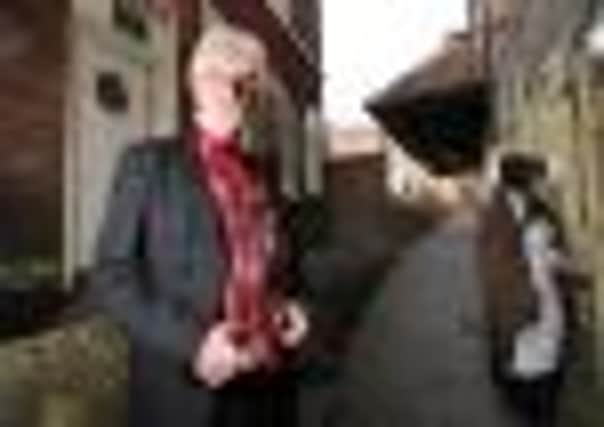Humbug! Town that inspired a literary classic


But now it appears that proof has been discovered that a solid, big-windowed building, in Chancery Lane, a narrow alley, in Malton, did indeed inspire Ebenezer Scrooge’s counting house in Charles Dickens’s A Christmas Carol.
The building was once the office of the author’s friend Charles Smithson, a solicitor who lived at Easthorpe Hall, an 18th century mansion just outside the town.
Advertisement
Hide AdAdvertisement
Hide AdNow it is understood that an original copy of the novel has been bought at auction in New York – the book has an inscription penned by Dickens to Mrs Charles Smithson, wife of the solicitor and he confirms in that inscription that he used the Chancery Lane office for the setting of A Christmas Carol.
A source with an interest in the tale told the Yorkshire Post said: “This is wonderful news.”
He said the purchase of the book, which is thought to have cost £40,000 and is understood to have been bought with the help of local businesses, was a boost for the town.
For years residents have believed that Dickens used an accountants’ office in the quaint Chancery Lane was the place where the legendary story was set, but until this week there was no proof.
Advertisement
Hide AdAdvertisement
Hide AdThe discovery could prove to be the most important piece of heritage to be discovered for Malton since its Roman remains and is set to draw in tourists.
The Yorkshire Post understands that the book will be unveiled to the public next week.
Dickens visited Malton several times to see his friend, Charles Smithson and his wife.
A Christmas Carol was written a few months after Dickens had spent a holiday with the Smithsons and he told the couple that the office in Chancery Lane was the model for Scrooge’s counting house and the bells that ring out in the story, were those of St Leonard’s Church in the town.
Advertisement
Hide AdAdvertisement
Hide AdYears later, the people of Scarborough were able to hear Dickens read – and perform – his famous Christmas story in person, while on a three-month tour of Britain.
There are many who have long believed the connection. Ian Wray, Brian Oxberry and other members of the Charles Dickens (Malton) Society have long been committed to sharing the author’s Yorkshire links.
In his booklet Charles Dickens: The Malton Connection, Mr Wray describes the author’s three-week stay in the summer of 1843 at Easthorpe (demolished 40 years ago after a fire). “I am quite serious in saying, “ he wrote from there, “that this is the most remarkable place of its size in England and immeasurably the most beautiful.”
He was hugely taken with the local landscape: “Oh Heaven,” he wrote to a friend, “Such green woods as I was rambling among, down in Yorkshire! For days and weeks, we never saw the sky but through green boughs.”
Advertisement
Hide AdAdvertisement
Hide AdThough A Christmas Carol wasn’t written in Malton, Dickens is reputed to have been working on Martin Chuzzlewit during his stay and supposedly based the character of Mrs Gamp the midwife on Smithson’s housekeeper.
Yesterday, a £3.1m revamp of a former home of Charles Dickens, aimed at giving the impression that the great author has just “stepped outside”, was unveiled.
The Charles Dickens Museum, in Bloomsbury, central London, family home to the 19th century genius between 1837 and 1839, will reopen on Monday after undergoing major renovation work.
Visitors will be able to tour the house where he wrote Oliver Twist and Nicholas Nickleby and finished writing The Pickwick Papers, stripped as far as possible of modern additions and restored to its original condition.
Advertisement
Hide AdAdvertisement
Hide AdThe Great Expectations project, funded largely through the Heritage Lottery Fund, has also restored neighbouring 49 Doughty Street to include a visitor and learning centre and a cafe.
The redesign, which opens the attic and kitchen of the house for the first time, has transformed the museum, first opened in 1925. Visitors will also be able to tour Dickens’s dining room and to see Dickens’s marriage licence.
His original writing desk and his reading desk are also on display.